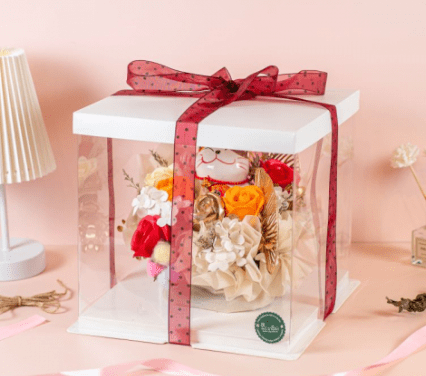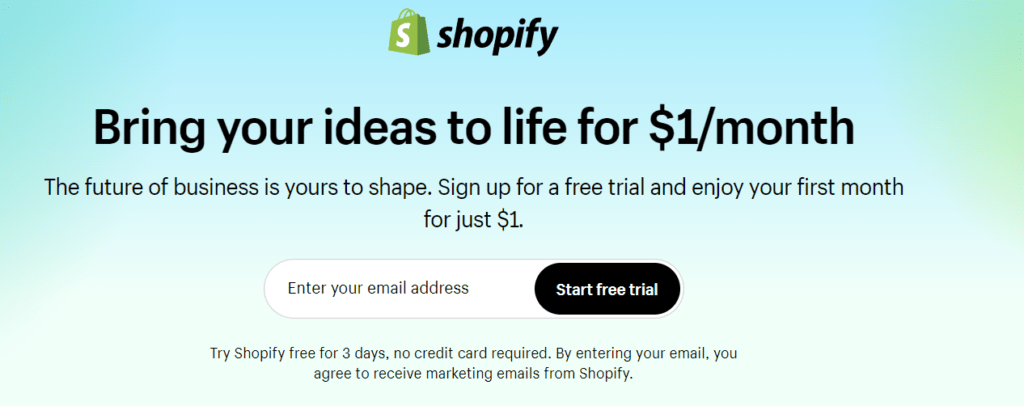Are you interested in starting a subscription box business but unsure of the costs involved? In this step-by-step tutorial, we’ll walk you through the process of launching a successful subscription box business, covering everything from finding your niche to pricing and marketing your products.
Table of Contents
Blueprint: Start a Subscription Box Business

Step 1: Identify Your Niche and Ideal Customer
Before diving into the subscription box business, it’s crucial to identify your niche and ideal customer. This will guide all your subsequent decisions and ensure you target the right audience.
Define Your Niche
Your niche is the specific market segment your subscription box will cater to. Choose a niche that aligns with your interests and expertise. This will make it easier to create a product that stands out.
- Identify what you’re passionate about
- Research market demand
- Consider your unique value proposition
Example: If you love rabbits and want to create a bunny subscription box for kids, your niche would be children’s educational animal-themed boxes.
Know Your Ideal Customer
Understanding your ideal customer helps tailor your offerings to meet their needs. Create a customer persona to visualize who you’re targeting.
- Age, gender, location
- Interests and hobbies
- Spending habits
Example: For a bunny subscription box, your ideal customer might be parents of children aged 5-10 who are interested in animals and learning.
Conduct Market Research
Market research is essential to identify gaps and opportunities in your chosen niche. This involves analyzing competitors and understanding customer reviews.
- List existing competitors
- Analyze their strengths and weaknesses
- Identify gaps in the market
Example: Research other animal-themed subscription boxes for kids to see what they offer and how you can differentiate your bunny box.
Validate Your Idea
Before fully committing, validate your subscription box idea to ensure there’s demand. This can save you time and money in the long run.
- Conduct surveys or focus groups
- Use social media to gauge interest
- Run a small pilot program
Example: Create a survey asking parents if they’d be interested in a bunny subscription box for their kids, and what they’d like to see included.
Step 2: Understand Subscription Box Product Considerations
Choosing the right products for your subscription box is a critical step. This will determine the value you offer and influence customer satisfaction.
Product Selection
Select products that align with your niche and resonate with your ideal customer. Ensure each item adds value and enhances the overall experience.
- Quality over quantity
- Unique and exclusive items
- Practical and useful products
Example: For a bunny subscription box, consider including educational books, bunny-themed toys, and rabbit care accessories.
Supplier Relationships
Building strong relationships with suppliers is vital for consistent product quality and reliability. This can also help you negotiate better prices.
- Research potential suppliers
- Request samples before committing
- Negotiate terms and pricing
Example: Reach out to bunny-themed product suppliers and request samples to ensure quality before placing a larger order.
Cost Management
Understanding the costs is essential for budgeting and pricing. Factor in all expenses to ensure profitability.
- Product costs
- Shipping and packaging
- Marketing and advertising
Example: Calculate the cost of bunny-themed items, boxes, and shipping to determine your bunny subscription box’s overall cost.
Packaging and Presentation
The presentation of your subscription box can significantly impact customer perception. Invest in attractive and durable packaging to enhance the unboxing experience.
- Choose eco-friendly materials
- Design eye-catching packaging
- Ensure items are securely packed
Example: Design a colorful, bunny-themed box with eco-friendly packaging materials to make the unboxing experience exciting for kids.
Inventory Management
Efficient inventory management helps avoid overstocking or stockouts. Use inventory management software to keep track of your products.
- Monitor stock levels regularly
- Plan for seasonal demand fluctuations
- Implement reorder points
Example: Keep track of your bunny-themed product inventory to ensure you have enough stock for each month’s boxes.

Step 3: Determine Pricing and Profit Margins
Pricing your subscription box correctly is crucial for your business’s success. Let’s break down the steps to ensure you make a profit while offering value to your customers.
Calculate Total Costs
First, you need to know all the costs involved in creating and shipping your subscription box. This includes product costs, packaging, shipping, and marketing expenses.
- Product costs: Wholesale prices
- Packaging: Boxes, fillers, labels
- Shipping: Carrier fees
- Marketing: Ads, promotions
Example: Add up the costs of bunny-themed products, packaging, shipping, and marketing for your subscription box.
Use a Pricing Calculator
Using a pricing calculator can simplify this process. Platforms like Cratejoy offer tools where you can input estimates for all your costs. This helps you determine how much to charge to make a profit.
- Product costs
- Shipping costs
- Advertising expenses
Example: Input your subscription box costs into Cratejoy’s pricing calculator to determine a profitable price point.
Understand Profit Margins
It’s essential to aim for a healthy profit margin. Aiming for a 50% profit margin is a good starting point. This means if your box costs $25 to create, you should charge at least $50.
- Cost to create: $25
- Selling price: $50
- Profit margin: 50%
Example: If your subscription box costs $20 to create, charge at least $40 to maintain a 50% profit margin.
Market Bearability
Consider what your market will bear. Research competitors and see what they charge. However, don’t be afraid to price higher if you offer unique value.
- Analyze competitors’ prices
- Evaluate your unique value proposition
- Adjust pricing accordingly
Example: Research other kids’ animal-themed subscription boxes to see their pricing, and adjust your bunny box price based on your unique offerings.
Adjust for Scaling
Remember, as your business grows, your expenses might increase. Plan for additional costs like warehousing, fulfillment centers, or hiring staff.
- Warehousing costs
- Fulfillment center fees
- Staff salaries
Example: As your subscription box business grows, factor in the costs of storing more inventory and hiring help to pack and ship boxes.
Include Shipping Costs
Customers generally dislike paying for shipping. Instead, include shipping costs in the product price. This makes the overall cost more appealing.
- Product cost: $20
- Shipping cost: $5
- Selling price: $45 (free shipping)
Example: Include the shipping cost in your subscription box price, so customers feel like they’re getting a better deal with free shipping.
Reevaluate and Adjust
Regularly reassess your pricing strategy. Adjust prices as needed to ensure profitability. Consider negotiating better deals with suppliers to lower costs.
- Reevaluate every quarter
- Negotiate with suppliers
- Adjust prices if necessary
Example: Review your bunny subscription box costs and pricing every few months, and make adjustments as needed to maintain profitability.
How Much Does It Cost to Start a Subscription Box Business?
The cost to start a subscription box business can vary depending on factors such as your niche, product selection, and scale. On average, expect to invest between $1,000 to $5,000 initially. This includes costs for:
- Product sourcing and inventory
- Packaging materials and design
- Website and e-commerce setup
- Marketing and advertising
- Shipping and fulfillment
For example, if you’re starting a bunny subscription box for kids, your initial costs might break down like this:
- Bunny-themed products: $500
- Packaging materials and design: $500
- Website and Shopify setup: $500
- Initial marketing and advertising: $500
- Shipping and fulfillment: $500
Total initial investment: $2,500
Keep in mind that ongoing costs will also factor into your overall expenses, such as monthly subscription platform fees, continual product sourcing, and shipping costs. As your business grows, you may also need to invest in additional staff, warehousing, and fulfillment solutions.
Example: As your bunny subscription box business scales, you might invest in:
- Hiring a part-time employee to help with packing and shipping: $1,000/month
- Renting a small warehouse space for inventory storage: $500/month
- Upgrading to a larger subscription platform plan: $100/month
By carefully calculating your initial and ongoing costs, you can create a budget and pricing strategy that ensures profitability for your subscription box business.

Step 4: Handle the Legal and Paperwork
Handling legal requirements and paperwork is essential to operate your subscription box business smoothly. Here’s a breakdown of what you need to do.
Form Your Business Entity
Choose the right business structure for your subscription box business. This could be a DBA, LLC, or another entity type. Each has its benefits and requirements.
- DBA: Doing Business As
- LLC: Limited Liability Company
- Corporation
Example: For a bunny subscription box business, an LLC might be a good choice to protect personal assets and establish credibility.
Register Your Business
Register your business with the state where you operate. This may involve different steps depending on your location. Each state has its own requirements.
- Business license
- State registration
- Local permits
Example: Register your subscription box business with your state’s secretary of state office and obtain any necessary local permits.
Get an EIN
Apply for an Employer Identification Number (EIN) from the IRS. This number is essential for tax purposes and opening a business bank account.
- Apply online
- Receive instantly
- Use for taxes and banking
Example: Get an EIN for your bunny subscription box business to use when filing taxes and opening a business bank account.
Open a Business Bank Account
Keep your business finances separate from personal finances. Open a business bank account to manage all income and expenses.
- Choose a bank
- Open a business account
- Manage finances separately
Example: Open a business bank account for your bunny subscription box to keep track of subscription income and expenses.
Insurance and Liability
Consider getting business insurance to protect against potential risks. This includes product liability insurance, especially if your products could cause harm.
- Product liability insurance
- General business insurance
- Consult an insurance agent
Example: Get product liability insurance for your bunny subscription box in case any products cause harm to customers.
Understand State and Local Regulations
Each state has different regulations for selling products. Research what’s required in your state to ensure you comply with all laws and regulations.
- State regulations
- Local permits
- Compliance with laws
Example: Research your state’s regulations for selling bunny-themed products and comply with any necessary labeling or safety requirements.
Trademark and Copyright
Protect your brand by registering trademarks and copyrights. This prevents others from using your brand name or copying your products.
- Trademark your business name
- Copyright your content
- Consult an attorney
Example: Trademark your bunny subscription box business name and logo to prevent others from using similar branding.
Tax Obligations
Understand your tax obligations, including sales tax, income tax, and any other applicable taxes. Hire an accountant if necessary to ensure compliance.
- Sales tax
- Income tax
- Consult an accountant
Example: Collect and remit sales tax on your bunny subscription box sales, and track income for tax purposes.
Record Keeping
Maintain detailed records of all business transactions. This includes sales, expenses, and any legal documents. Good record-keeping is essential for tax purposes and financial management.
- Sales records
- Expense receipts
- Legal documents
Example: Keep detailed records of your bunny subscription box sales, expenses, and legal paperwork for easy reference and tax filing.
By handling the legal and paperwork aspects of your subscription box business, you set yourself up for success. These steps ensure you operate legally and protect your business from potential risks.

Step 5: Choose a Subscription Platform and Website
Choosing the right platform and website for your subscription box business is crucial. This will streamline your operations and enhance the customer experience.
Why Shopify?
For your subscription platform, I highly recommend using Shopify. It’s user-friendly and versatile.
- Easy to set up
- Supports e-commerce
- Reliable and secure
Example: Set up a Shopify store for your bunny subscription box business to handle orders and payments securely.
Adding Recurring Payments
To handle recurring payments, you will need an app. Bold is a great choice for this.
- Seamless integration
- Automates billing
- User-friendly interface
Example: Install the Bold app on your bunny subscription box Shopify store to manage recurring monthly payments.
Choosing a Website Theme
Shopify offers numerous themes to customize your website. Select one that fits your brand.
- Filter by industry or aesthetic
- Consider themes with video support
- Choose a drag-and-drop template
Example: Choose a colorful, kid-friendly Shopify theme for your bunny subscription box website to appeal to your target audience.
The Power of Product Photography
High-quality product photos can make your website look professional. Invest in good photography.
- Find an affordable photographer
- Use both lifestyle and white background images
- Enhance your website’s appeal
Example: Hire a photographer to take high-quality photos of your bunny subscription box products and packaging for use on your website.
Step 6: Develop Your Visual Branding
Visual branding is essential to create a strong first impression. It includes your brand colors, fonts, and logo.
Importance of Visual Branding
Visual branding helps your business stand out and connect with customers instantly.
- Creates a memorable impression
- Communicates your brand’s personality
- Encourages customer engagement
Example: Develop a cute, colorful logo and branding for your bunny subscription box to appeal to kids and parents.
Budget-Friendly Branding
You don’t need to spend a fortune on branding. Start with affordable options.
Example: Hire a Fiverr designer to create a bunny-themed logo for your subscription box business for under $100.
Research and Inspiration
Draw inspiration from brands you love. Analyze their visual elements.
- Identify appealing colors
- Note the fonts they use
- Understand their overall vibe
Example: Research other kid-friendly subscription box brands to get inspiration for your bunny box branding.
Developing Your Brand’s Personality
Your brand should have a distinct personality. This should be reflected in your visual elements.
- Is your brand funny or serious?
- Is it bold or muted?
- Ensure consistency across all visuals
Example: Give your bunny subscription box brand a fun, playful personality that appeals to kids and parents alike.
Visual branding is a critical step in making your subscription box business successful. Start simple, and as your business grows, you can refine and enhance your branding efforts.

Step 7: Determine Your Packaging
Choosing the right packaging for your subscription box is crucial for both branding and practicality.
Start Small
Initially, use packaging companies like Packlane or Packable. They allow you to order smaller quantities, which is ideal when you’re just starting out.
- Order as few as 10 boxes
- Test different sizes
- Flexible design options
Example: Order a small batch of branded boxes from Packlane for your bunny subscription box to test sizing and design.
Avoid Commitment
Avoid committing to a specific design or size until you’re sure it works for your business. This way, you won’t waste money on boxes that don’t fit your needs.
- No need for print plates
- Easy to rebrand
- Adjust size as needed
Example: Don’t commit to a large order of bunny subscription boxes until you’ve tested your packaging with customers and received feedback.
Invest as You Grow
Once your business scales and you are sending out hundreds of items per month, consider investing in a box manufacturing company. This will lower your per-unit cost.
- Lower cost per box
- Invest in print plates
- Order larger quantities
Example: As your bunny subscription box business grows, invest in a custom box design and larger order quantities to save on packaging costs.
Calculate Costs
It’s essential to understand how much does it cost to start a subscription box business, including packaging. Initially, it might cost more, but the flexibility is worth it.
- $5-$6 per box initially
- Lower to $1 per box later
- Consider all packaging expenses
Example: Budget for higher packaging costs initially for your bunny subscription box, but know that costs will decrease as you scale.
Step 8: Plan Your Pre-Launch Strategy
Pre-launch strategy is essential for creating buzz and building an audience before your official launch.
Start with Social Channels
Create social media profiles on platforms like Instagram and TikTok. Starting from day one will help build a following.
- Focus on TikTok for growth
- Consider Instagram for visuals
- Post consistently
Example: Create an Instagram account for your bunny subscription box and post cute, engaging content to attract followers.
If successful, then you may want to also then consider a Print on Design business in the same niche as your subscription in a box business as you can utilize the email list. For more info click here.
